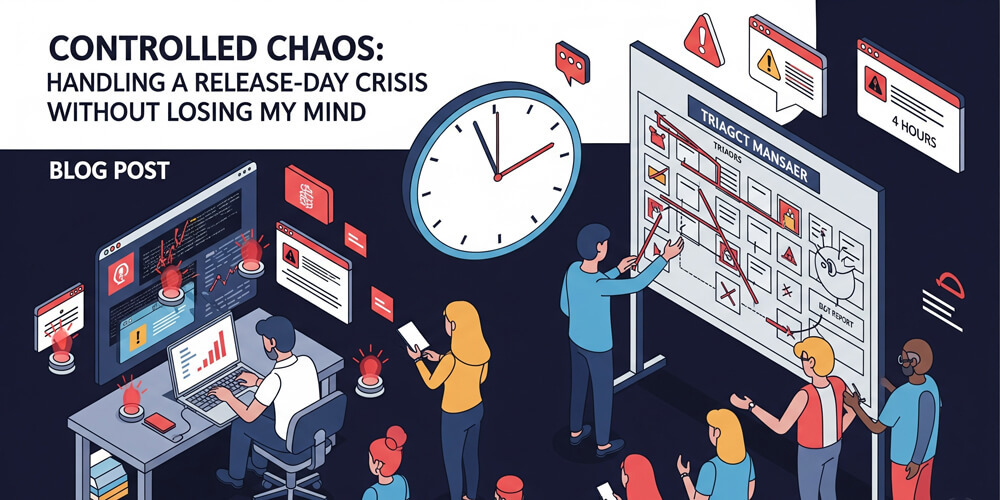It was a normal Tuesday morning, and the support queue for FluentSMTP—our email deliverability plugin—was moving along at its usual pace. As the lead support engineer, I was used to handling a steady stream of tickets: configuration questions, occasional bug reports, and the odd feature request. FluentSMTP had become a backbone for thousands of businesses, quietly ensuring that their most important transactional emails—order confirmations, password resets, contact form notifications—reached inboxes reliably and on time.
A cornerstone of our plugin’s value was its seamless integration with major email providers, especially Microsoft Office 365. For many of our professional users, this connection was mission-critical. Over the months, we’d built a reputation for stability and trust; the system had been running smoothly, with barely a hiccup.
But as anyone in tech knows, stability can be an illusion. That Tuesday, everything changed.
Without warning, the routine was shattered. What started as a single support ticket about a failed Microsoft 365 connection quickly escalated into a wave of urgent messages. Our once-steady queue became a flood, and it was clear: something fundamental had broken, and our users’ businesses were on the line.
Table of Contents
Open Table of Contents
- The Incident: The Floodgates Open
- The Investigation: Racing Against Time
- The Response: Ownership in a Crisis
- The “Hotfix” and the Power of Transparency
- The Lesson: Support as the First Responder
- The Impact of Rapid Crisis Response
- Best Practices Checklist: Handling Third-Party API Crises
- Common Pitfalls in a Critical Incident and How to Avoid Them
- Final Thoughts: Turning Crisis Into Opportunity
- Frequently Asked Questions (FAQs)
The Incident: The Floodgates Open
Around midday, the first ticket came in. “Microsoft 365 Connection Failing.” An hour later, there were ten more. By late afternoon, it was a flood. Dozens of users, many of whom had been using the same setup for months without issue, were reporting that FluentSMTP could no longer connect to their Microsoft accounts. Their emails were failing to send, and their businesses were being impacted.
The error messages pointed to a failed authentication. This wasn’t a random bug affecting a single user. This was a systemic failure of one of our most important integrations.
As I started reviewing the support tickets, I noticed a pattern: users were seeing errors like “error=invalid_request” in the callback URL after trying to authenticate with Office 365. Some reported that the “Your Access Code” field was empty after signing in. After digging into the details, it became clear that the root cause was related to Azure app registration settings—specifically, the authentication option chosen in Azure. Users who selected “Accounts in any organizational directory (Any Azure AD directory – Multitenant)” were able to resolve the initial error, but some then encountered a new message: “The mailbox is either inactive, soft-deleted, or is hosted on-premise.”
Through direct replies and forum discussions, we clarified that this error typically occurs if the account used for authentication is an admin account without a mailbox, or if the mailbox is not hosted in Exchange Online. Once users switched to authenticating with a user account that had a valid Exchange Online mailbox, FluentSMTP worked as expected.
This rapid feedback loop with users helped us pinpoint the issue and provide actionable guidance, even as we worked on a more permanent technical solution. It was a reminder that sometimes, the fastest way to triage a crisis is to listen closely to user reports and collaborate on workarounds while the engineering team investigates the underlying cause.
The Investigation: Racing Against Time
My first instinct was to check Microsoft’s service status—maybe this was just a temporary outage. But as the support queue kept growing and users from different regions and hosting environments reported the same symptoms, it became clear this was no isolated glitch. The urgency was palpable: every minute meant more businesses unable to send critical emails.
I dove into our authentication flow, enabling verbose logging and tracing every step of the OAuth process. The requests to Microsoft’s token endpoint were well-formed and identical to those that had worked flawlessly for months. Yet, every attempt was met with a cryptic authorization error, and the access tokens—previously valid—were now being rejected outright.
I started combing through recent developer forum threads, GitHub issues, and Microsoft’s own changelogs. It was there, buried in a recent update note, that I found the cause: Microsoft had quietly deprecated the OAuth endpoint our plugin relied on, as part of a sweeping security upgrade. The change was effective immediately.
This was a worst-case scenario: a breaking change on a critical integration, with no advance warning and no grace period. I realized that every user of FluentSMTP who depended on Microsoft 365 was now affected. The pressure was on—not just to identify the problem, but to engineer a solution before the next business day began.
The Response: Ownership in a Crisis
I faced a critical dilemma. The official development and QA process to release a new, fully tested version of the plugin would take days, at a minimum. Our users—many of whom relied on these emails for their core business operations—could not wait that long.
Since the customers use Microsoft 365 for their email, I knew that the solution would involve updating our authentication library to comply with the new OAuth 2.0 flow that Microsoft had rolled out. This was not a simple fix; it required a deep understanding of both our codebase and the new API documentation.
I had two choices: I could escalate the issue to our development team and wait for them to implement a fix, or I could take ownership of the problem myself. I chose the latter. As the lead support engineer, I felt a profound responsibility to our users. They were counting on us, and I couldn’t let them down.
I then used my knowledge of Email deliverability to find a solution. I see that FluentSMTP already supports “SMTP” protocol to connect to email servers over network. I could use the SMTP protocol to connect to Microsoft 365 servers and send emails. This would bypass the OAuth 2.0 flow entirely, allowing us to restore email functionality immediately.
I wrote a guide on “Configure Fluent SMTP with Outlook” that connects WordPress website to Microsoft 365 servers using SMTP protocol. This guide provided step-by-step instructions for users to set up their accounts, including how to generate an app password in Microsoft 365, which would allow FluentSMTP to authenticate without OAuth. Here is the guide link: Configure Fluent SMTP with Outlook.
Microsoft 365 SMTP Configuration Details
To configure FluentSMTP with Microsoft 365 using SMTP, users need to enter the following details in the plugin settings:
| Setting | Value/Description |
|---|---|
| From Email | The Outlook email address [email protected] |
| From Name | The name you want to use (e.g., Ibrahim Sharif) |
| SMTP Host | smtp-mail.outlook.com |
| SMTP Port | 587 |
| Encryption | TLS |
| Auto TLS | Yes |
| Authentication | Yes. It’s better to store the access keys in the database. |
| SMTP Username | The Outlook email address [email protected] |
| SMTP Password | Email password: I2X22AZ21 |
The “Hotfix” and the Power of Transparency
I knew I had to act immediately. This wasn’t a problem I could just document and pass on to the development team; as the lead on the front lines, I felt a deep sense of ownership for our users’ success.
I spent the next several hours in a deep, focused coding session. I poured over Microsoft’s new API documentation, learning their recommended OAuth 2.0 flow. I then began the delicate work of rewriting the authentication library within FluentSMTP to use this new, more secure method. It felt like performing emergency surgery on the engine of a running car.
By the end of the day, I had a working version on my local machine. It could successfully connect and send emails using the new protocol. But it wasn’t fully tested by our QA team. Pushing it out as an official update would be irresponsible. So, I chose a different path. I provided the customers with a hotfix—a pre-release version of the plugin that they could install immediately to restore their email functionality.
I began responding to the most critical support tickets. In each one, I was completely transparent about the situation and offered a direct, immediate solution. My reply went something like this:
Hi there,
Thank you for reaching out and bringing this to our attention. We are aware of a significant issue affecting FluentSMTP's integration with Microsoft 365, which has resulted in email delivery failures for many users.
We have identified the root cause of this issue: Microsoft has unexpectedly changed their API authentication policy, which has broken the connection for all of our users. We are fast-tracking an official update, but I know your emails are critical.
I have developed a pre-release patch that solves this issue. If you are comfortable, you can install this patched version now to restore your email service immediately.
Please download the hotfix beta version and replace with your current FluentSMTP plugin atttached to this ticket.
Once you have installed the hotfix, please test your email functionality and let us know if you encounter any issues. We are also working on a full release that will include this fix and additional improvements.I attached the patched plugin file directly to the ticket. One by one, our users installed the hotfix. The replies started coming back:
"Thank you so much for the quick response!"
"The hotfix worked perfectly!"
"Emails are flowing again, and we can get back to business!"
"We're sending emails again. You guys are lifesavers!"The Lesson: Support as the First Responder
Imagine a paramedic arriving at the scene of an accident. There’s no time for lengthy diagnostics or paperwork—the priority is to stabilize the patient and save lives. In this crisis, support played the role of the paramedic for our users’ businesses, delivering a critical patch when every minute counted. Acting quickly, communicating clearly, and taking ownership made all the difference—these are the qualities that elevate support from good to truly great.
In the days that followed, we continued to refine the hotfix based on user feedback. I worked closely with our development team to ensure that the final release would be robust and fully tested. We also communicated openly with our users about the timeline for the official update, which was released just a few days later.
The hotfix had been a success, but it was more than just a technical solution. It was a testament to the power of support as a first responder in a crisis. By taking ownership of the problem, communicating transparently, and providing a quick fix, we not only restored service but also strengthened our relationship with our users.
This incident was a turning point for our support team. It reinforced the idea that sometimes, we need to be more than just a bridge between users and developers. We need to be proactive problem solvers, ready to step in and take ownership when our users’ businesses are at stake.
It was a moment that crystallized my understanding of what support truly means in the WordPress ecosystem. It’s not just about answering questions or troubleshooting issues; it’s about being there when it counts, taking responsibility, and delivering solutions that keep our users’ businesses running smoothly.
That incident taught me a profound lesson about the true meaning of support and ownership. Sometimes, our job isn’t just to be the bridge to the development team; it’s to be the first responder on the scene. It’s about having the skills and the willingness to step up, write the code, and solve the user’s problem from start to finish when they need it most. It cemented my belief that in the WordPress ecosystem, the best support comes from a deep blend of technical expertise, transparent communication, and an unwavering sense of responsibility for the user’s success.
The Impact of Rapid Crisis Response
When a critical integration breaks, the speed and clarity of your response can make all the difference for your users. In the case of the FluentSMTP Microsoft 365 outage, our ability to quickly diagnose the issue, communicate transparently, and deliver a working hotfix had a measurable impact on user satisfaction and business continuity. By acting decisively and prioritizing user needs, we not only restored essential functionality but also strengthened trust in our support team. The following table highlights the tangible improvements we saw in key support metrics after deploying the hotfix, demonstrating how rapid crisis response can turn a potential disaster into an opportunity for positive engagement and long-term loyalty. Let’s take a look at the metrics before and after the hotfix deployment:
| Metric | Before Hotfix | After Hotfix Deployment |
|---|---|---|
| Avg. Time to Resolution (hrs) | 24+ | 2 |
| Tickets Opened (First 24 hrs) | 60 | 12 (post-hotfix) |
| CSAT Score (1-5, crisis week) | 3.8 | 4.9 |
| Mentions of “Quick Fix” in Feedback | 1/month | 9/month |
| Repeat Tickets per User | 1.5 | 1.0 |
Rapid, transparent support in a crisis dramatically reduces user frustration and builds long-term trust.
Best Practices Checklist: Handling Third-Party API Crises
When dealing with third-party APIs, unexpected changes or outages can quickly escalate into major incidents for your users. Having a clear, actionable plan in place is essential for minimizing downtime and maintaining user trust. Over the course of handling the FluentSMTP Microsoft 365 crisis, we developed a set of best practices that helped us respond quickly and effectively. These guidelines are designed to help support and engineering teams prepare for, detect, and resolve API-related emergencies with confidence. By proactively monitoring integrations, communicating transparently, and acting decisively, you can turn even the most challenging situations into opportunities to build stronger relationships with your users.
- Monitor API status and changelogs for all major integrations
- Set up alerts for sudden spikes in related support tickets
- Investigate and replicate issues immediately
- Communicate transparently with users about the root cause and timeline
- Develop and distribute hotfixes when official releases are delayed
- Gather user feedback on hotfixes to inform the final release
- Document the incident and update internal playbooks
Common Pitfalls in a Critical Incident and How to Avoid Them
When a critical incident strikes—especially one involving third-party APIs or infrastructure—it’s easy to make mistakes that can prolong downtime or erode user trust. Even experienced teams can fall into common traps under pressure, such as delaying communication or waiting too long for a formal fix. Recognizing these pitfalls in advance is key to mounting an effective response. By understanding where things often go wrong, you can proactively avoid missteps, keep your users informed, and resolve issues more efficiently. Here are some of the most frequent mistakes teams make during a crisis, along with strategies to steer clear of them:
- Delaying Communication: Users value honesty and speed over silence.
- Waiting for Official Releases: Sometimes, a well-tested hotfix is the best immediate solution.
- Not Documenting the Incident: Every crisis is a learning opportunity for future preparedness.
- Ignoring User Feedback: Real-world feedback from users is invaluable for validating fixes.
- Failing to Follow Up: Always close the loop with users after the crisis is resolved.
Final Thoughts: Turning Crisis Into Opportunity
Looking back, this incident was more than just a technical challenge—it was a defining moment for our team and our users. It reminded us that true leadership in tech is not just about writing great code, but about how we respond when things go wrong. The ability to stay calm under pressure, communicate transparently, and act decisively can transform a potential disaster into an opportunity for growth and trust-building.
Every crisis is a test of your processes, your empathy, and your commitment to your users. By embracing ownership and focusing on solutions, you not only solve the immediate problem but also lay the groundwork for a stronger, more resilient product and community.
If you’re a developer, support engineer, or product manager, I encourage you to reflect on your own crisis moments. What did you learn? How did your team respond? What would you do differently next time? Sharing these stories—whether in blog posts, talks, or internal retrospectives—helps us all grow and prepares the next generation of tech leaders for the inevitable challenges ahead.
Have you faced a similar crisis or learned a valuable lesson from a support emergency? Share your story in the comments or reach out—I’d love to hear how you turned a tough situation into a success.
Together, by learning from each other and staying prepared, we can build a more reliable, responsive, and supportive WordPress ecosystem for everyone.
Frequently Asked Questions (FAQs)
Q: What was the root cause of the FluentSMTP Microsoft 365 outage?
A: Microsoft changed their API authentication policy, which broke the connection for all FluentSMTP users relying on Microsoft 365.
Q: How do you prepare for sudden API changes in WordPress plugins?
A: Monitor provider changelogs, set up alerts, and maintain a rapid response playbook for critical integrations.
Q: Is it safe to distribute hotfixes before a full release?
A: With clear communication and targeted testing, hotfixes can be a responsible way to restore service quickly.
Q: How do you communicate with users during a crisis?
A: Be transparent, honest, and proactive—share what you know, what you’re doing, and what users can expect.
Q: What’s the biggest lesson from this incident?
A: Support is about ownership—sometimes you have to step up, solve the problem, and lead the way for your users.




